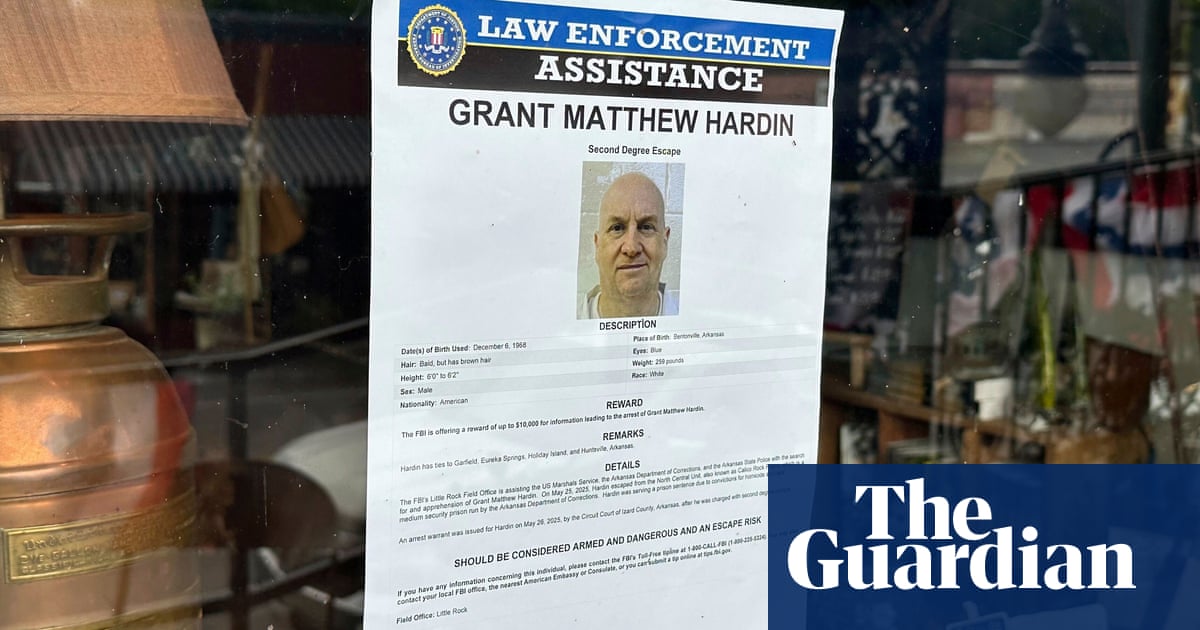The escape of Grant Hardin, “the devil in the Ozarks,” exposed critical vulnerabilities in the correctional system and ignited widespread fear. What lasting impact will this prison escape have on victims, security protocols, and the future of criminal justice? This article unpacks the aftermath of the “Devil in the Ozarks” case, revealing systemic failures, the human cost of crime, and the urgent need for enhanced security and victim support.
The Devil in the Ozarks: Unpacking the Aftermath and Future Implications of a Prison Escape
Table of Contents
- The Devil in the Ozarks: Unpacking the Aftermath and Future Implications of a Prison Escape
- The Human Cost: Trauma, Resilience, and the Long Shadow of Crime
- Security Lapses and Systemic Failures: A Call for Reform
- The Role of True Crime and Media: Amplifying the Narrative
- Future Trends: Enhanced Security, Victim Support, and Community Engagement
- The Path Forward: Accountability, Healing, and Prevention
The recent prison escape of Grant Hardin, dubbed “the devil in the Ozarks,” has sent shockwaves through the United States. His brazen breakout, detailed in a recent article, has not only reignited fear among his victims and their families but also exposed critical vulnerabilities within the correctional system.This event offers a stark reminder of the complexities of justice, the lasting impact of crime, and the need for constant vigilance in maintaining public safety. Let’s delve into the key takeaways and explore the potential future trends this case highlights.
The Human Cost: Trauma, Resilience, and the Long Shadow of Crime
The article underscores the profound and enduring impact of Hardin’s crimes on his victims. Amy Harrison, the survivor of his rape, and Cheryl Tillman, whose brother was murdered by Hardin, represent the countless individuals whose lives have been irrevocably altered. Their stories highlight the psychological toll of violent crime and the long road to recovery. The escape has reopened old wounds, forcing them to relive the trauma and question their sense of security.
Did you know? Studies show that survivors of violent crimes frequently enough experience post-traumatic stress disorder (PTSD), anxiety, and depression, even years after the event. The Hardin case is a stark example of how these effects can be exacerbated by the actions of the perpetrator.
Security Lapses and Systemic Failures: A Call for Reform
Hardin’s escape, achieved by impersonating a corrections officer, reveals notable flaws in prison security protocols. The lack of proper identification checks and the apparent ease with which he was able to leave the facility raise serious questions about the effectiveness of current measures. This incident is not an isolated event; it points to a broader system failure that demands immediate attention.
Pro Tip: Correctional facilities should implement rigorous identification procedures, including biometric verification, to prevent similar incidents. Regular audits and staff training are crucial to maintain security standards.
The Role of True Crime and Media: Amplifying the Narrative
The documentary “Devil in the Ozarks” played a significant role in shaping public perception of Hardin and his crimes. The media’s coverage of his escape further amplified the narrative,creating a real-time thriller that captivated the nation. While true crime stories can raise awareness about criminal justice issues, they can also sensationalize events and possibly cause further distress to victims.
reader Question: How can media outlets balance the public’s interest in true crime stories with the need to protect the privacy and well-being of victims?
Future Trends: Enhanced Security, Victim Support, and Community Engagement
The Hardin case is highly likely to influence several future trends in the criminal justice system:
- Enhanced Security Measures: Expect to see increased investment in advanced security technologies, such as facial recognition, biometric scanners, and improved surveillance systems in correctional facilities.
- Increased Focus on staff Training: Correctional officers will receive more extensive training on security protocols, risk assessment, and de-escalation techniques.
- Expanded Victim Support Services: There will be a greater emphasis on providing comprehensive support services to victims of crime,including mental health counseling,legal assistance,and financial aid.
- Community Engagement and Education: Law enforcement agencies and community organizations will work together to educate the public about crime prevention, safety measures, and the importance of reporting suspicious activity.
Case Study: Following a similar prison escape in another state, authorities implemented a new system of mandatory ID checks and increased surveillance, which substantially reduced the risk of future incidents.
The Path Forward: Accountability, Healing, and Prevention
The Grant Hardin case serves as a critical reminder of the need for a robust and accountable criminal justice system. It underscores the importance of addressing systemic failures, supporting victims, and preventing future tragedies. By learning from this event, we can strive to create a safer and more just society for all.
What are your thoughts on the Hardin case and it’s implications? Share your comments and insights below.Let’s work together to build a more secure future.

